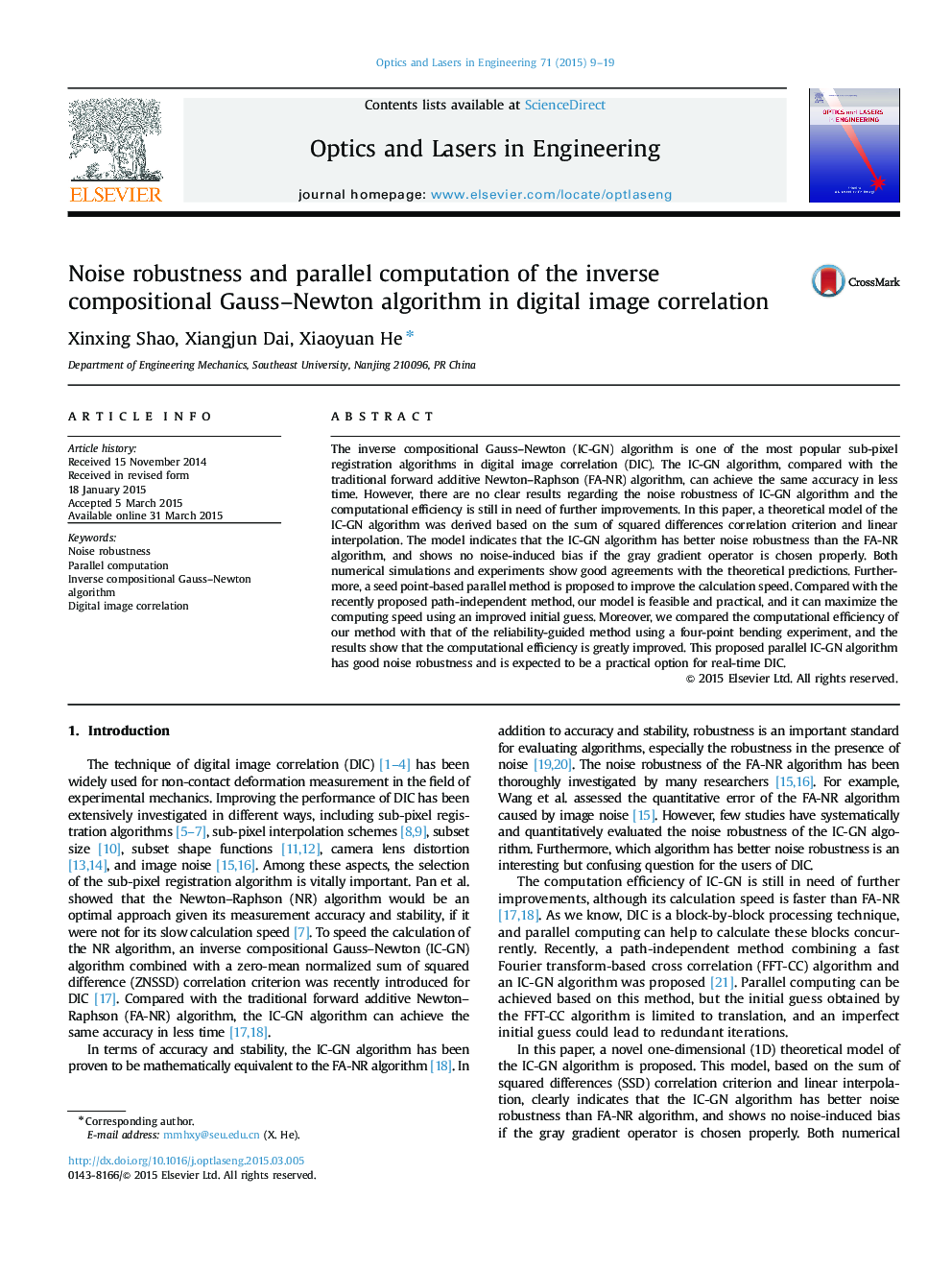| Article ID | Journal | Published Year | Pages | File Type |
|---|---|---|---|---|
| 734774 | Optics and Lasers in Engineering | 2015 | 11 Pages |
•A theoretical model of the IC-GN algorithm is derived in terms of noise.•The noise robustness of IC-GN algorithm is compared with that of FA-NR algorithm.•IC-GN algorithm has better noise robustness than FA-NR algorithm.•IC-GN algorithm shows no noise-induced bias when proper gradient operator is used.•We propose a seed point-based parallel method for parallel computation.
The inverse compositional Gauss–Newton (IC-GN) algorithm is one of the most popular sub-pixel registration algorithms in digital image correlation (DIC). The IC-GN algorithm, compared with the traditional forward additive Newton–Raphson (FA-NR) algorithm, can achieve the same accuracy in less time. However, there are no clear results regarding the noise robustness of IC-GN algorithm and the computational efficiency is still in need of further improvements. In this paper, a theoretical model of the IC-GN algorithm was derived based on the sum of squared differences correlation criterion and linear interpolation. The model indicates that the IC-GN algorithm has better noise robustness than the FA-NR algorithm, and shows no noise-induced bias if the gray gradient operator is chosen properly. Both numerical simulations and experiments show good agreements with the theoretical predictions. Furthermore, a seed point-based parallel method is proposed to improve the calculation speed. Compared with the recently proposed path-independent method, our model is feasible and practical, and it can maximize the computing speed using an improved initial guess. Moreover, we compared the computational efficiency of our method with that of the reliability-guided method using a four-point bending experiment, and the results show that the computational efficiency is greatly improved. This proposed parallel IC-GN algorithm has good noise robustness and is expected to be a practical option for real-time DIC.
